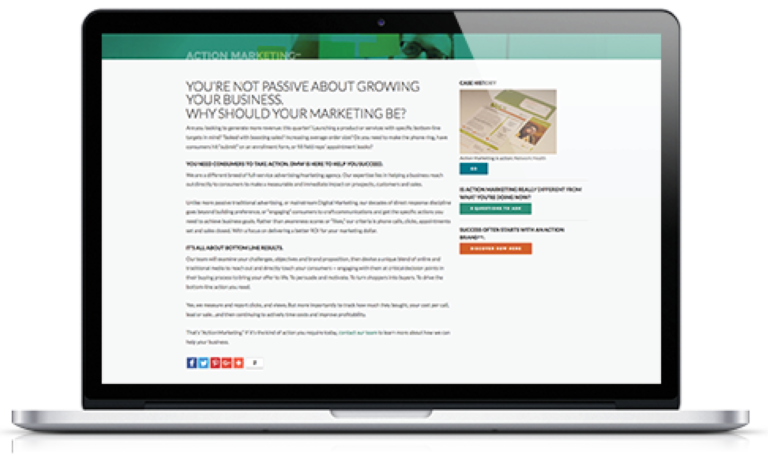Data Is the Difference Maker for Branding and Direct Response Marketing
Steve Gupton Response Marketing, Trends and POVHow to Use Your Brand to Build Awareness and Motivate Prospects
Author’s note: I originally wrote this article in 2001. I decided to revisit the topic because although our world has changed in many ways since then, I was curious to see if I would still agree with what I wrote 15 years ago. One thing has stood the test of time and will likely continue to do so: the core principles of branding and marketing.
Apple. Coca-Cola. Toyota. Three top global brands from three totally different industries — yet they have something in common: effective advertising. How do they “Think different?” Do the people in their marketing departments and ad agencies just get together and “Share a Coke and a smile”? Unlikely. So what’s the secret? Why are those companies able to say “Let’s go places” and have people follow?
Smart branding teams don’t just dream up a memorable catch phrase or slogan to inspire people. There is a process to be followed.
Brands become big because they do their homework, make a plan, and execute it in a disciplined fashion with nothing left to chance.
Since I first wrote about branding at the beginning of the millennium, the biggest change is the impact of market data. Product testing, consumer research, and focus groups are not new and continue to be used by marketers as valuable inputs. But the ability to collect and analyze mountains of information about buyer habits and interests has grown exponentially since big data became possible for all. Whether or not marketers choose to collect it, what they focus their attention on analyzing, and to what extent they heed what’s been gleaned, often makes the difference.
This evolution has had a tremendous impact on direct response marketing, as well as advertising and branding as a whole.
Market Data Reveals All
A company without market data (including research and analytics) is just shooting from the hip — some hits, some misses, and a whole lot of wasted ammunition. Market data finds the nuggets of information that you need to define your brand in the marketplace. It tells you who your customers are, what they want in products and services, where they’re located, and how to reach them — everything about market segments.
But doesn’t market data cost a lot? Yes, a quantitative research study with thousands of respondents in numerous markets will be expensive — but well worth it. At DMW Direct, we frequently also leverage predictive modeling to further maximize our clients’ return on investment.
In addition, many companies already have market data right under their noses. It can be as simple as asking your sales team what’s happening in the field or examining customer complaints. All it takes to put that valuable information to work is investigation, organization, and implementation.
The alternative method — guessing — could cost your company far more. Failure comes in different ways. You could:
- launch a new product that lacks the one feature customers now demand;
- offer a new service that customers can now get online for free; or
- neglect the right messaging for your prime target audiences in your marketing tactics.
Play it safe. Research your market, analyze the data, and apply what you learn.
Brand Positioning Defines Your Identity
Take yourself for example. There’s no other person in the world like you; you are truly one of a kind. That’s the challenge with branding a company, product, or service. How do you develop a unique positioning to define an identity like no other in your industry? If you do your homework (i.e., market research), the brand positioning comes naturally. From the research findings and what you know about your company or offering, a strong brand can emerge.
 Learn how we’ve helped our clients drive response through Action Marketing.
Learn how we’ve helped our clients drive response through Action Marketing.
Case in point: DMW Direct recently developed a new brand identity for SilverScript, a national Medicare prescription drug plan provider. We helped launch this new positioning via our Action Brand™ discipline. Our team digs in deep, blending in direct response tactics to not only build awareness, but also create a brand that drives sales. Where branding seeks to build awareness and establish an identity, the inherent direct response aspects of an Action Brand go a step beyond to engage and interact with an audience.
In addition, all marketing decisions should be based on a clear understanding of your marketplace. The success of your positioning, pricing, product, and promotion hinge upon customers’ wants and needs. Your brand will be the engine that powers all marketing activities.
Creative Strategies Foster Ideas
As with anything worth doing, put strategy before tactics – in this case, a creative strategy. Having that in place allows you to develop a more effective creative brief, a working document that anyone can follow to develop optimum advertising for your brand. It puts everyone on the same page. Ideally, these 10 to 12 questions are easily answered with market data and brand positioning. For example:
- What is the communications objective of this project? Simply what you want to accomplish.
- Who are we talking to? Your target audience: the people you want to reach.
- What is the product/service, and what are its features? Whatever it is that you’re selling.
- What is the single basic benefit to be conveyed to this audience? In other words, one key message. Not two, or three — just one!
- What is the desired action of the audience? This is the call to action (CTA) that drives people online or to a call center. We track every target with a unique URL and/or phone number — and generate a Responder ID so we know which tactic worked!
Is it necessary to have a creative strategy and brief? Absolutely! Without it, there’s nothing to judge the creative design and output against. In such situations, when it comes time to choose a concept, everybody’s right and everybody’s wrong — there’s no way to win. You sacrifice consistency and ultimately fail to establish a clear identity.
Most of our clients already have broad brand guidelines and standards in place. While we’re happy to follow them, we’ll typically layer in Action Brand techniques when producing an in-market campaign. While guidelines are essentially rules, we still have plenty of room to be creative while eliciting the greatest possible response. And in the cases where no such brand guidelines exist, we’re happy to help build that required foundation.
Guts Give Way to Glory
Every day we get bombarded with advertisements — over 5,000 exposures is the number cited most often by the experts. But how many do you remember? Probably not many. And even fewer where you grasped the advertisers name plus the advantage and offer they make. So what can your company do to break through the noise and clutter? If you’ve followed all the previous steps, then standing out is possible with the right concept. In advertising speak, a concept is an idea developed from the creative strategy. But concepts can be good or bad. That’s the challenge.
 It takes creative talent and a strong strategy to produce a great concept that drives action. Sometimes it happens in an hour or in an afternoon, but it usually takes more time. You have to live with the project — work with a creative partner in a closed brainstorming room, think by yourself while taking a walk, see a movie with your family, do some laundry, or sleep on it. The mind works in mysterious ways.
It takes creative talent and a strong strategy to produce a great concept that drives action. Sometimes it happens in an hour or in an afternoon, but it usually takes more time. You have to live with the project — work with a creative partner in a closed brainstorming room, think by yourself while taking a walk, see a movie with your family, do some laundry, or sleep on it. The mind works in mysterious ways.
The Rest Is Magic
Branding gets people to know. Direct response marketing gets people to act. Data provides actionable insights for both.
Get the market data, develop the brand, write a creative strategy, and then let your agency do its thing. But remember, there’s no exact science to coming up with an effective concept — there are only steps in a marketing communications process. The rest is magic. Just ask Apple, Coca-Cola, Toyota … and DMW Direct.